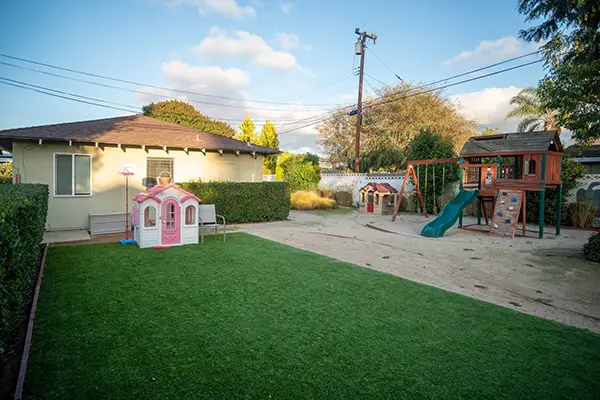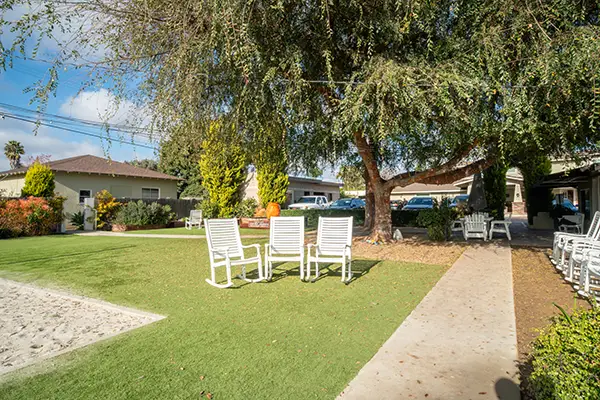New Directions for Women would like to thank Dr. Gaetano Vaccaro of Moonview Sanctuary for filming this video interview: “Breaking the Trauma Code” with us.
—
Good afternoon. I’m Dr. Gaetano Vaccaro, the Director of Development and Deputy Clinical Director at Moonview Sanctuary in Santa Monica, California. I wanna just have an acknowledgement to New Directions for Women for an incredibly awesome program that you have, and thank you for setting up the opportunity for me to speak with you today.
One of the things I’ve been asked to speak about is actually, one of the new developments in multimodal treatment and how it actually impacts addiction recovery treatment. And it’s really an amazing and powerful time in addiction recovery treatment because within the last ten years, there’s been incredible developments in brain research. And we now know a lot more about the addiction recovery model, and what kinds of treatments are going to be most beneficial to people with different types of addictions.
At Moonview Sanctuary, we have integrated what we call the Moonview Model; it’s actually a very unique multimodal treatment model that’s designed to address all the many facets that actually interplay with addictions. Behavioral addictions process addictions such as, gambling addictions, and sexual compulsivity, and Internet addiction, and other kinds of process additions that have a huge behavioral component, their intensity, the same kind of biological and neurological interplay that you’ll find with substance abuse addictions and chemical dependency.
So, it’s a very interesting time in our culture because the disease model has actually been a process that we’ve dealt with in addiction recovery for many, many years. And there was a large movement away from the disease model. Part of it was because it was difficult to actually prove that addictions really did fall into the category of a disease.
Now there’s actually a movement back towards what we would consider the disease model – understanding that there is a variety of different internal, structural, biological mechanisms that interplay with the behaviors that we actually refer to as addictions. So, we’re looking at addictions now on a genetic level, we’re looking at addictions on a behavioral level, we’re looking at a biological level, we’re looking at the interplay of early childhood trauma, chronic unremitting stress, and we’re looking at how conditioning actually comes into addictions.
With process addictions there’s a large component of repetition compulsions, the actual scenario, the actual ritual of the addiction can be a repetition compulsion of earlier childhood sexual trauma or childhood addictions. We’re actually looking at what happens in early childhood and how these behaviors actually get formed.
The big question is can a young child be an addict? Do addictions begin in adulthood? Do they begin in early adolescents? Do they begin in childhood? We don’t really know the clear answer to how an addiction forms. We do know that what we consider to be an addiction, the whole behavioral schema, that we actually call an addiction, whether it’s a substance abuse disorder or whether it’s a process disorder, that that is a variety of different types of mechanisms within the human being.
It’s actually classical conditioning, an operant conditioning, environmental influences, different types of stress – that all this interplay that’s happening and when you put together some genetic and biological markers. When you look at epigenetics, the whole process of how our genetic biology formulates throughout our entire life, we come up with this very rich and very interesting kind of blueprint for how to manage addictions.
One of the ways that we’ve been working with addictions at Moonview Sanctuary is to actually look at the unconscious imprinting of trauma: how a traumatic event actually becomes encoded into the person’s brain and psyche because these early traumatic events can somehow set a person up to later on being more accustomed to different types of addictive behaviors.
They’re more prone to entering into a kind of, what we would call, process addiction because these traumatic events set up certain kinds of conflicts within the person, and link and pair certain types of behaviors together that may not have been originally paired. So, what we’re finding now is that an individual who comes in for treatment has to be accessed on a variety of different levels. We’re always accessing for childhood sexual abuse, childhood trauma. Neglect is a huge marker for addiction.
All kinds of stress in childhood can also be a marker for addiction. Also, when we look at family patterns, we’ve known for many, many decades now that addictions tend to run through families, and we can see that there’s a very strong genetic precursor for addictions. But how does that genetic precursor actually become activated? What we know now from a lot of the brain research is that genes provide a framework for behavior and for later expression, but they are not automatically expressed.
A gene can be expressed through some kind of a trigger in the environment, through some kind of an environmental trigger, behavioral trigger, stress, tension. So, a person could go through their life very well for many, many years and actually have no problems, and then some kind of a configuration, the perfect storm of different types of stress can come together and actually activate that gene.
And actually, then you see a lot of different types of addictions that happen later on in adulthood. So, by looking at the entire picture of what goes into what we would consider addictions, and beginning to tease out these different types of processes, we can now focus treatment towards each of those different of those processes.
We can focus treatments on the over activation of the parasympathetic nervous system. We can focus treatment on different kinds of thought processes. Treatment modality, such as neuro-linguistic programming to help a person deal with chronic, negative self-talk, and self-image. We can also look at cognitive behavioral therapies. But we can also move towards other kinds of body-oriented therapies, somatic experiencing, powerful kinds of therapies that are actually helping a person work with the addiction without having to relive the trauma that first encoded it. We’re actually looking at EMDR, and other kinds of treatments that bypass the cognitive part of the brain and go right to some of the primitive encoding.
When a child between the age of 0 and maybe even 6 months before birth, and 6 years of age, as children, we are just these sponges just soaking up all of the influence from the environment. But we don’t really have the filtering mechanism to filter out all of these different stimuli.
So, we’re taking it in all at face value, and that’s when a lot of imprinting takes place. That’s when we’re creating the framework that actually sets a person up for later behaviors. Now some of these can be incredibly powerful and good behaviors. Attachment, our ability to attach and form relationships, that’s all developed within the first 6 years of life. Certainly, even the earlier portions of life be with our relationships with the early caregivers.
But chronic neglect, chronic abuse during those early years can also create abridgements that are very difficult if not impossible to resolve later on in life. So, these are the kinds of configurations that we’re looking at. What we’re hoping now is that treatment specialists are going to get a more holistic viewpoint on what causes addiction.
Looking at all of the different aspects of it, both the mind, the body, and of course the spiritual aspects of it because the process of feeling out of control with your behavior, of feeling unable to really regulate your own emotions, and regulate your own thinking can leave you in a place where you feel incredibly spiritually bankrupt.
And also, addiction is a disorder of meaning. There is a way that an addict looks at the world when they’re going through the struggle and the tension of dealing with this out of control behavior. So, we also have to look at how we can create some meaning in a person’s life and a viewpoint about a hopeful feature.
So, I’m hoping that this time in our history is going to give us the opportunity to put together pieces that we never really had the technology to really look at, we can do some neurofeedback, and neurocognitive training, and biofeedback to help to restructure parts of the brain that were actually damaged or undeveloped in early childhood.
So, these are just a little bit of an overview of how multimodal treatment might work, what are different benefits of multimodal treatment? I hope you’ll look at the Moonview Sanctuary website, WWW.MOONVIEWSANCTUARY.COM. And we’ll give you more information with the articles and all of the different interviews that we have on our website. And if you have any other questions, please feel free to contact us. Thank you.



